Death and Dying
READINGS IN BIOETHICS
Edited by Thomas A. Shannon
Readings in Bioethics is a series of anthologies that gather together seminal essays in four areas: reproductive technologies, genetic technologies, death and dying, and health care policy. Each of the readers addresses specific case studies and issues under its respective topic. The goal of this series is twofold: first, to provide a set of readers on thematic topics for introductory or survey courses in bioethics or for courses with a particular theme or time limitation. When used in conjunction with a core text that provides the appropriate level of analytical framework, the readers in this series provide specific analysis of a set of issues that meets the professors individual needs and interests. Second, each of the readers in this series is designed with the student in mind and aims to present seminal articles and case studies that help students focus more thoroughly and effectively on specific topics that flesh out the ethical issues at the core of bioethics.
Volumes in the Readings in Bioethics Series:
Reproductive Technologies
Genetic Technologies
Death and Dying
Health Care Policy
Death and Dying
A Reader
Edited by
Thomas A. Shannon

A SHEED & WARD BOOK
ROWMAN & LITTLEFIELD PUBLISHERS, INC.
Published in the United States of America
by Rowman & Littlefield Publishers, Inc.
A wholly owned subsidiary of The Rowman & Littlefield Publishing Group, Inc.
4501 Forbes Boulevard, Suite 200, Lanham, Maryland 20706
www.rowmanlittlefield.com
PO Box 317
Oxford
OX2 9RU, UK
Copyright 2004 by Thomas A. Shannon
All rights reserved. No part of this publication may be reproduced, stored in a retrieval system, or transmitted in any form or by any means, electronic, mechanical, photocopying, recording, or otherwise, without the prior permission of the publisher.
British Library Cataloguing in Publication Information Available
Library of Congress Cataloging-in-Publication Data
Death and dying : a reader / edited by Thomas A. Shannon.
p. cm.(Readings in bioethics)
A Sheed & Ward book.
Includes bibliographical references and index.
ISBN:978-0-7425-3194-9
Assisted suicideMoral and ethical aspects. 2. EuthanasiaMoral and ethical aspects. 3. DeathMoral and ethical aspects. I. Shannon, Thomas A. (Thomas Anthony), 1940- II. Series.
R726.D434 2004
Printed in the United States of America
 The paper used in this publication meets the minimum requirements of American National Standard for Information SciencesPermanence of Paper for Printed Library Materials, ANSI/NISO Z39.48-1992.
The paper used in this publication meets the minimum requirements of American National Standard for Information SciencesPermanence of Paper for Printed Library Materials, ANSI/NISO Z39.48-1992.
to my colleagues in philosophy and religion at WPI Roger Gottlieb, John Sanbonmatsu, and Ruth Smith
Contents
David DeGrazia
Michael Panicola
Stephen G. Post
Charles F. von Gunten
Kathleen Foley and Herbert Hendin
Paul B. Bascom and Susan W. Tolle
Thomas A. Shannon
Anonymous
Ezekiel J. Emanuel
Upper House of the States General, The Netherlands, Parliamentary Year 20002001
Acknowledgments
Gratefully acknowledged are the following publishers, editors, and authors for their permission to reprint their publications:
David DeGrazia. Biology, Consciousness, and the Definition of Death. Report from the Institute for Philosophy and Public Policy. 18 (winter/spring 1998):1822. Reprinted with permission of the editor.
Michael Panicola. Catholic Teaching on Prolonging Life: Setting the Record Straight. Hastings Center Report. 31 (NovemberDecember 2001):1425. Reprinted with permission of the Hastings Center Report and the author.
Stephen G. Post. Tube Feeding and Advance Progressive Dementia. Hastings Center Report. 31 (JanuaryFebruary 2001):3642. Reprinted with permission of the Hastings Center Report and the author.
Charles F. von Gunten, Secondary and Tertiary Palliative Care in U.S. Hospitals. Journal of the American Medical Association. 287 (20 February 2002):87581. Reprinted with permission of the American Medical Association.
Kathleen Foley and Herbert Hendin. The Oregon Report: Dont Ask, Dont Tell. Hastings Center Report 29 (MayJune 1999):3742. Reprinted with permission of the Hastings Center and the authors.
Paul B. Bascom and Susan W. Tolle. Responding to Requests for Physician-Assisted Suicide: These Are Uncharted Waters for Both of Us... Journal of the American Medical Association. 288 (3 July 2002):9198. Reprinted with permission of the American Medical Association.
Thomas A. Shannon. Physician-Assisted Suicide: Ten Questions. Commonweal 1 June 1996:1617. Reprinted with permission of Commonweal.
Anonymous. I Could Not Give Her Health But I Could Give Her Rest. Journal of the American Medical Association. 259 (8 January 1988):272. Reprinted with permission of the American Medical Association.
Ezekiel J. Emanuel. The History of Euthanasia Debates in the United States and Britain. Annals of Internal Medicine 121 (15 November 1994):793802. Reprinted with permission of the American College of Physicians.
Upper House of the States General: The Netherlands. Review Procedures of Termination of Life On Request and Assisted Suicide and Amendment to the Penal Code. Ministry of Justice. www.minjust.nl . No copyright.
Introduction
Since its introduction over a decade ago, the field of bioethics has grown exponentially. Not only has it become established as an academic discipline with journals and professional societies, it is covered regularly in the media and affects people everyday around the globe.
One important development in the field has been the informal division into clinical and institutional bioethics. Institutional bioethics has to do with the ethical dilemmas associated with the various institutions, the majority of which are providers of health care services. Delivery of health care, allocations of health care payments, mergers, closing or restricting services of certain departments or even of hospitals or clinics themselves are systemic questions involving a broad range of ethical agenda. On the clinical side, the bevy of usual suspects of ethical dilemmas is increasing in complexity as technology moves forward, new interventions are proposed, and fantasies become realities. Few, for example, thought that human cloning would become a serious clinical, public policy, and institutional debate in 2002.
One of the major consequences of this quantitative and qualitative debate is that providing resources for introductory or even specialized courses is becoming much more difficult. This is particularly difficult in the case of editing an anthology to compliment a text that provides an analysis of the core ethical issues. There is simply too much material to put into a single anthology that is reasonable in price and convenient in size.
This series is an attempt to resolve the problem of a cumbersome and expensive anthology by providing a set of four manageable and accessible readers on specific topics. Thus each reader in the series will be on a specific topicreproductive technologies, genetic technologies, death and dying, and health care policyand will be about two hundred pages in length. This is to provide professors with flexibility in designing their courses. Ideally, professors will use a core text to analyze the primary ethical issues in bioethics and will use the readers in this series to examine specific problems and cases, thus providing flexibility in designing syllabi as well as providing variety in presenting the course.
Next page

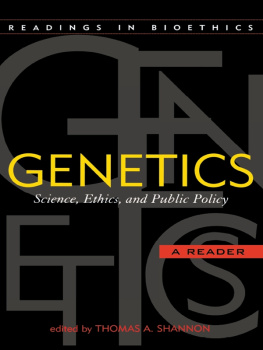


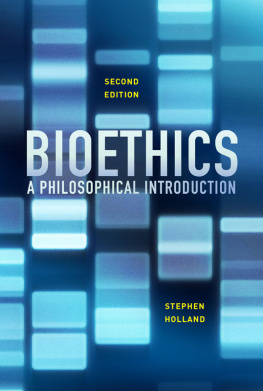
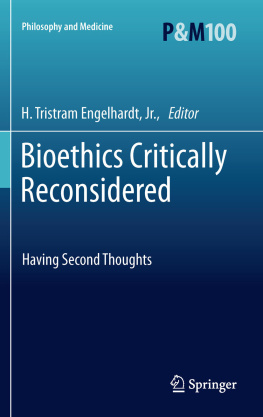
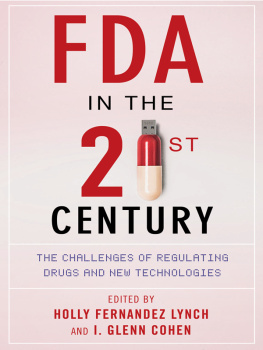
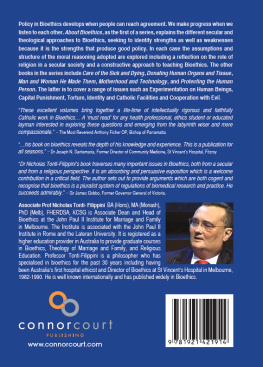

 The paper used in this publication meets the minimum requirements of American National Standard for Information SciencesPermanence of Paper for Printed Library Materials, ANSI/NISO Z39.48-1992.
The paper used in this publication meets the minimum requirements of American National Standard for Information SciencesPermanence of Paper for Printed Library Materials, ANSI/NISO Z39.48-1992.